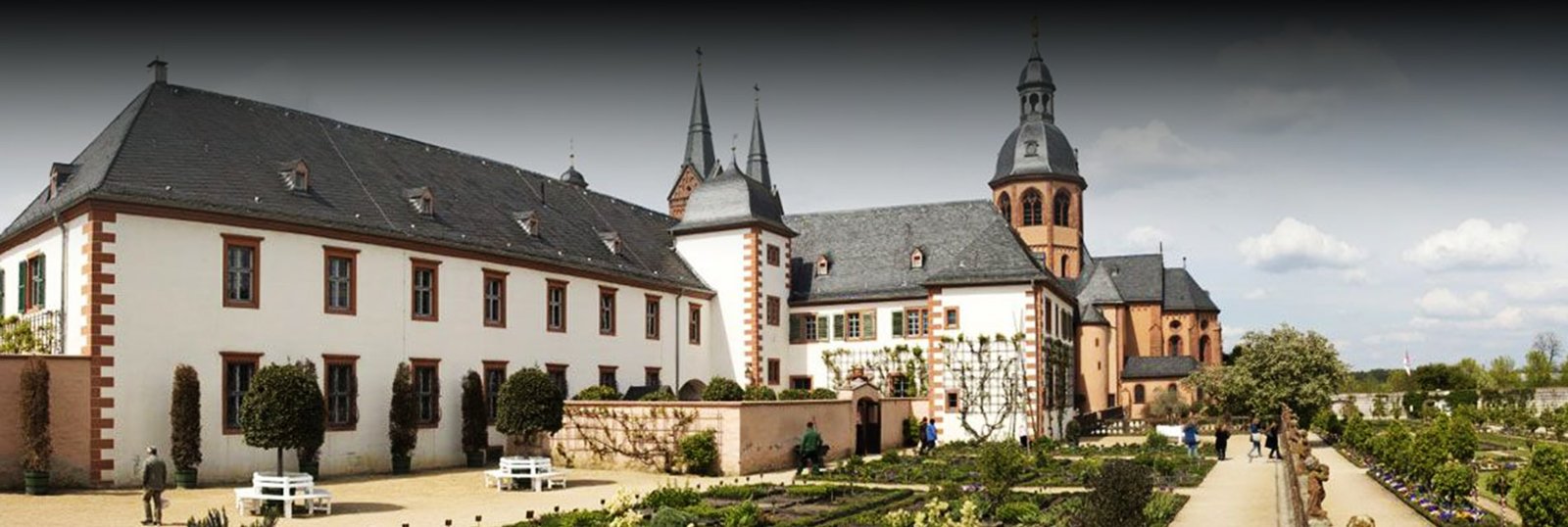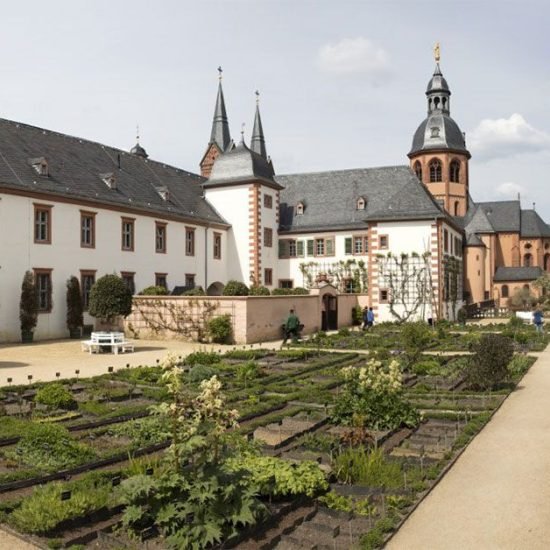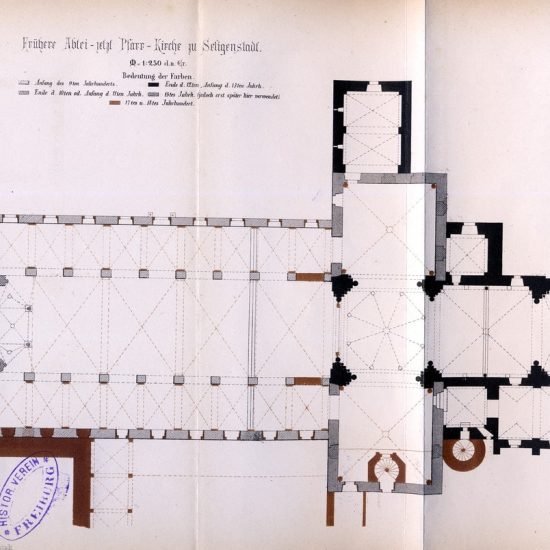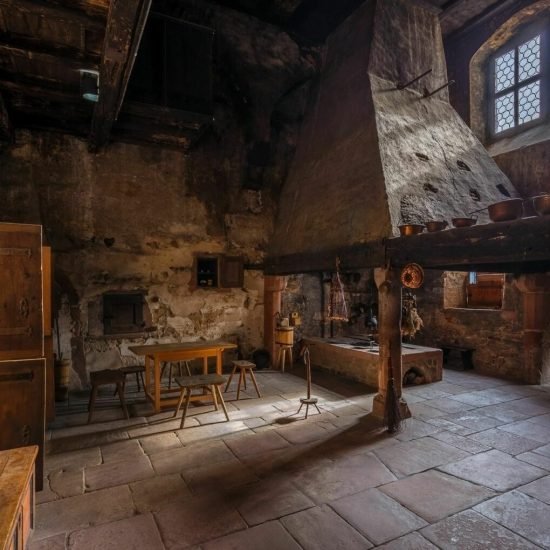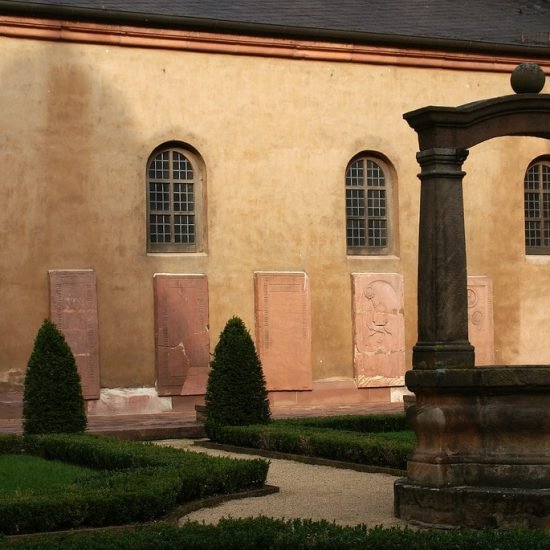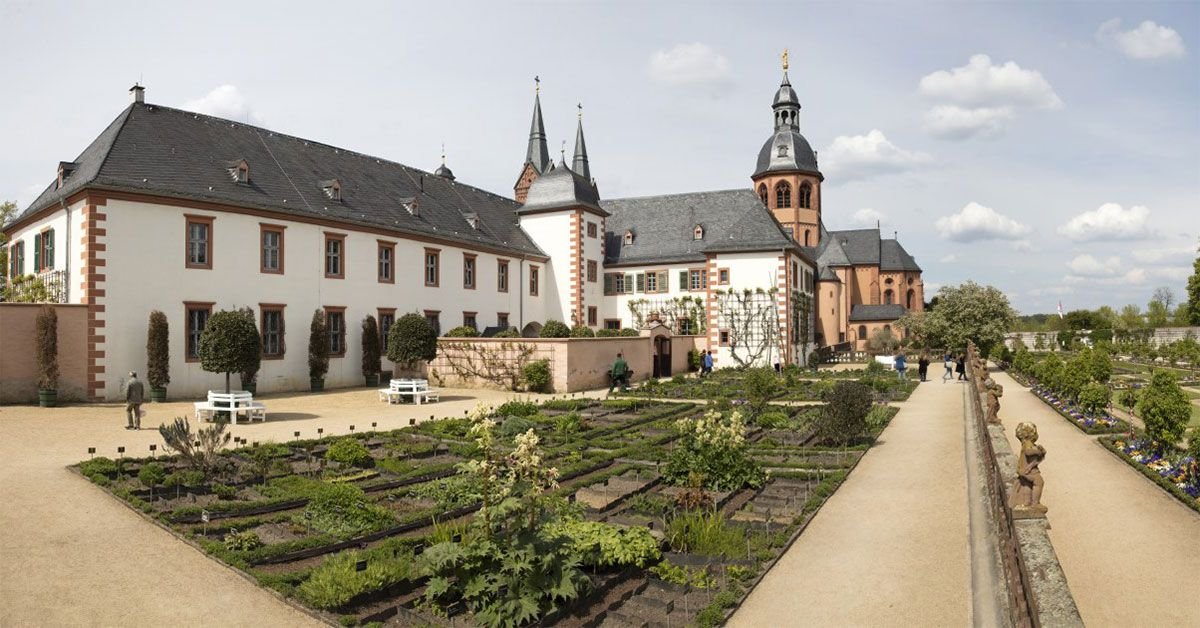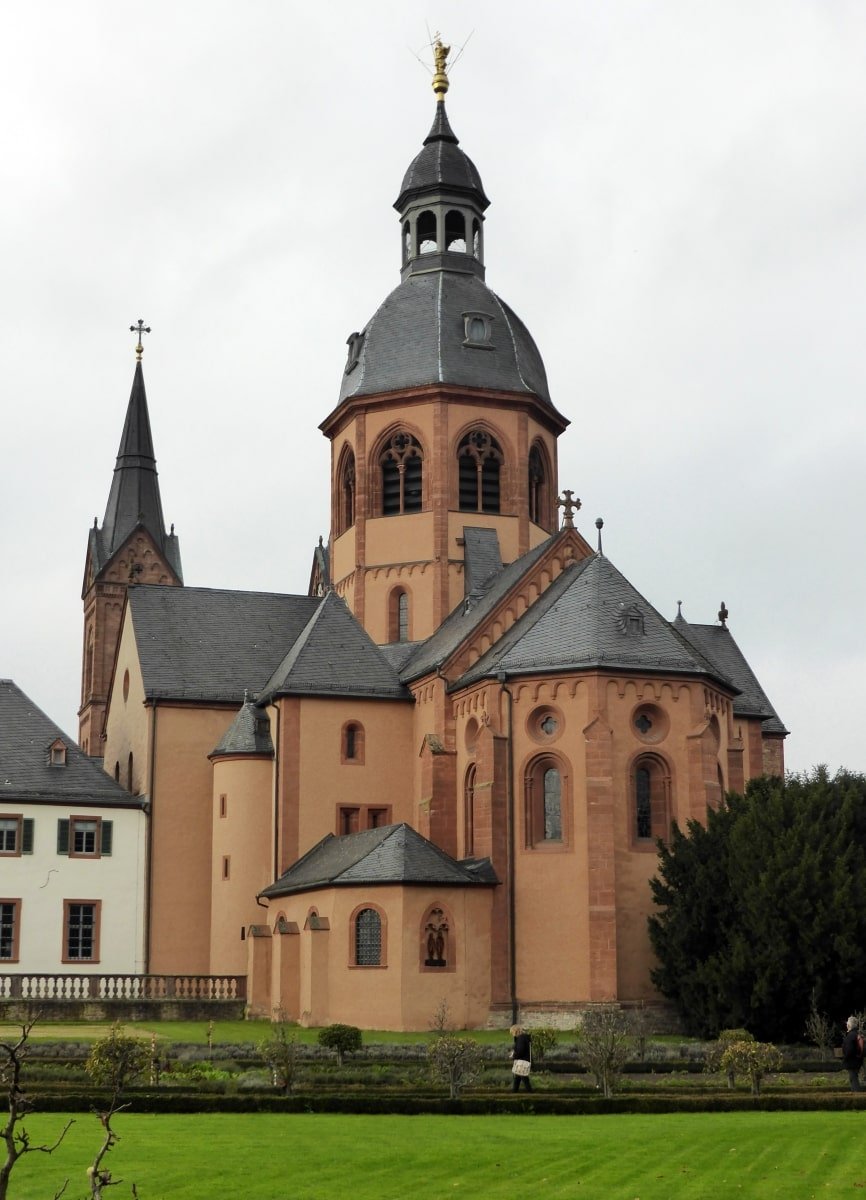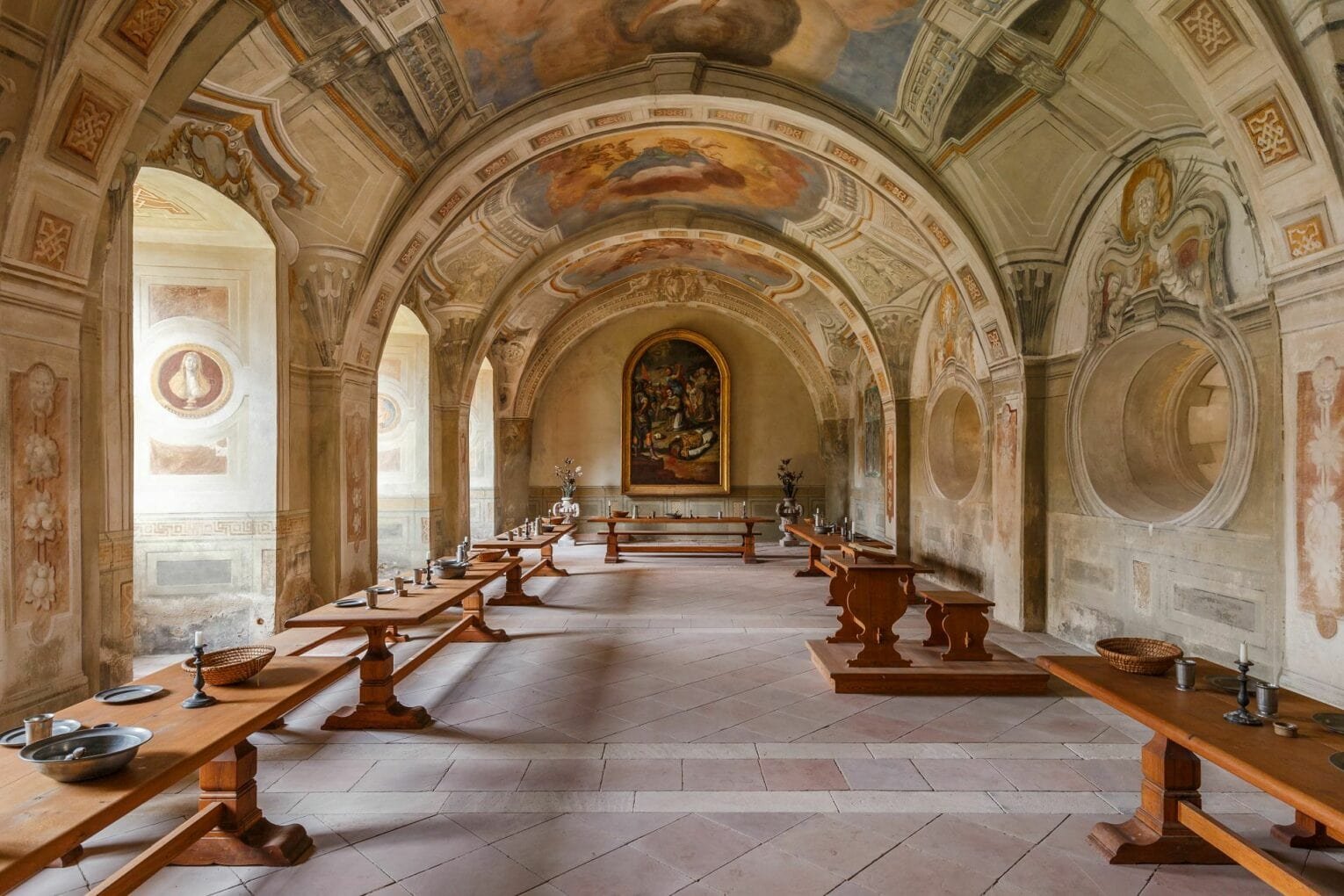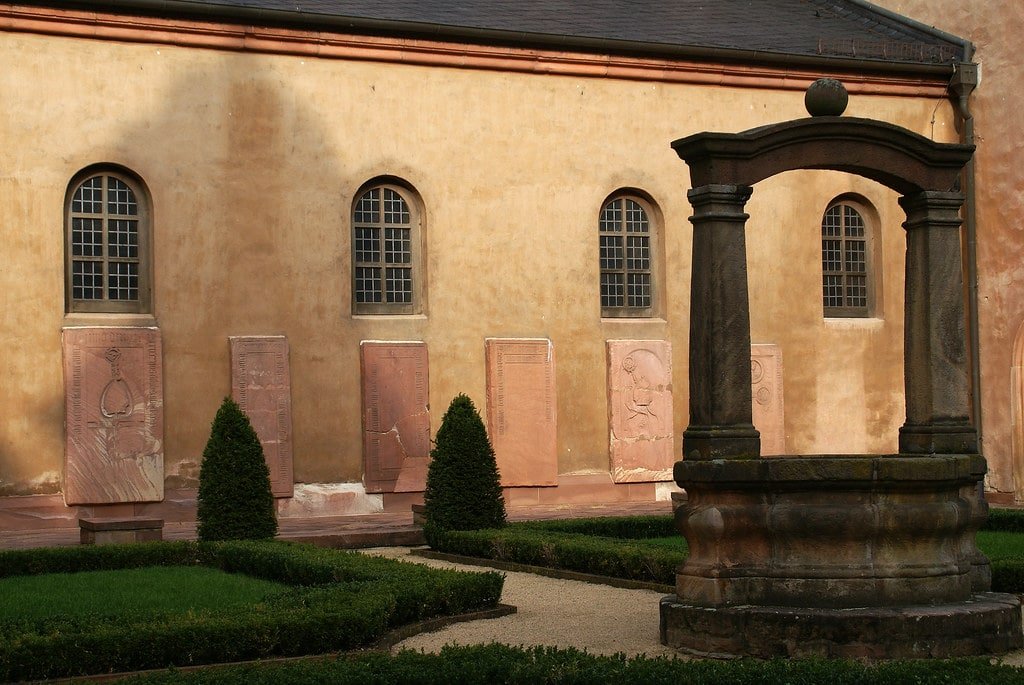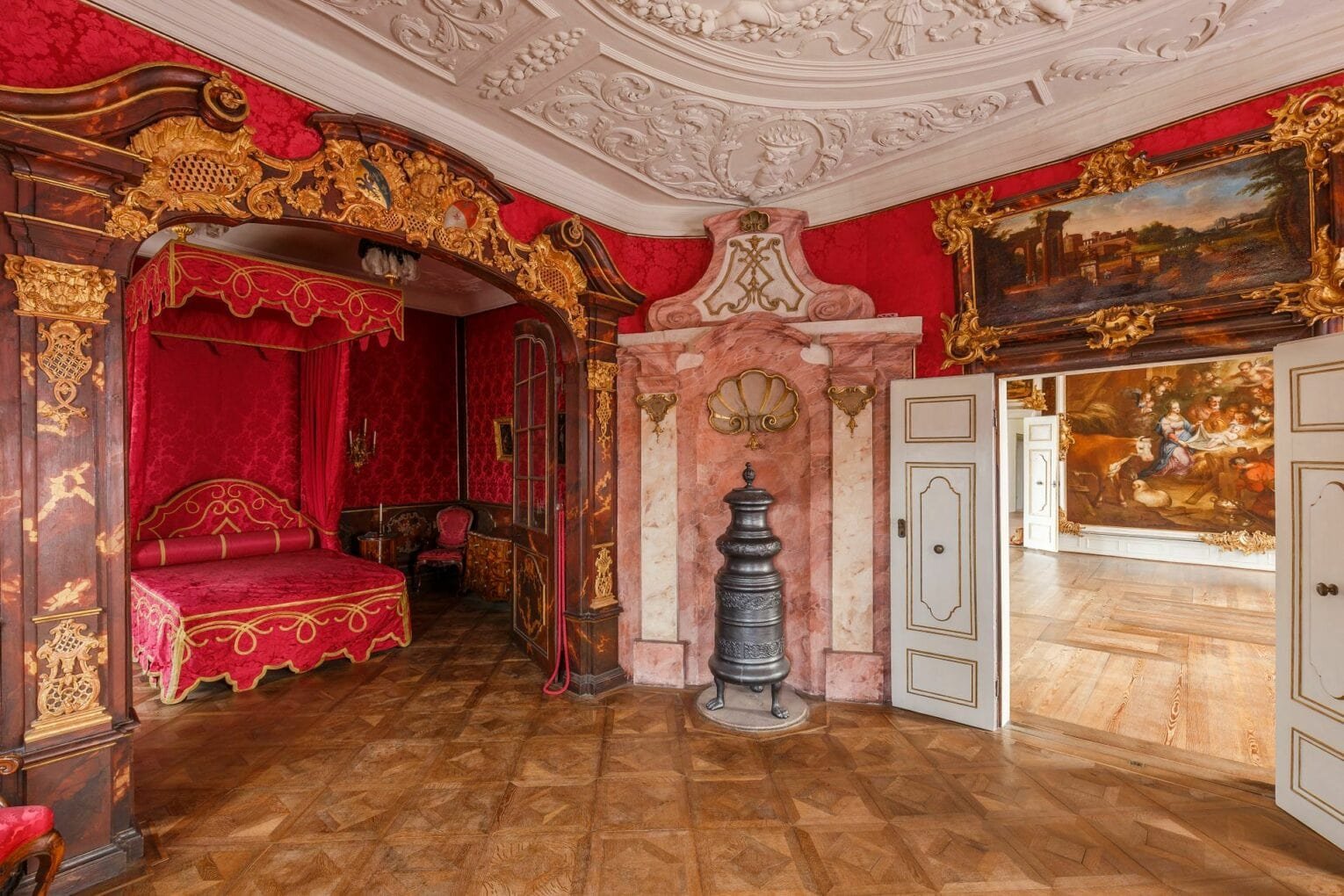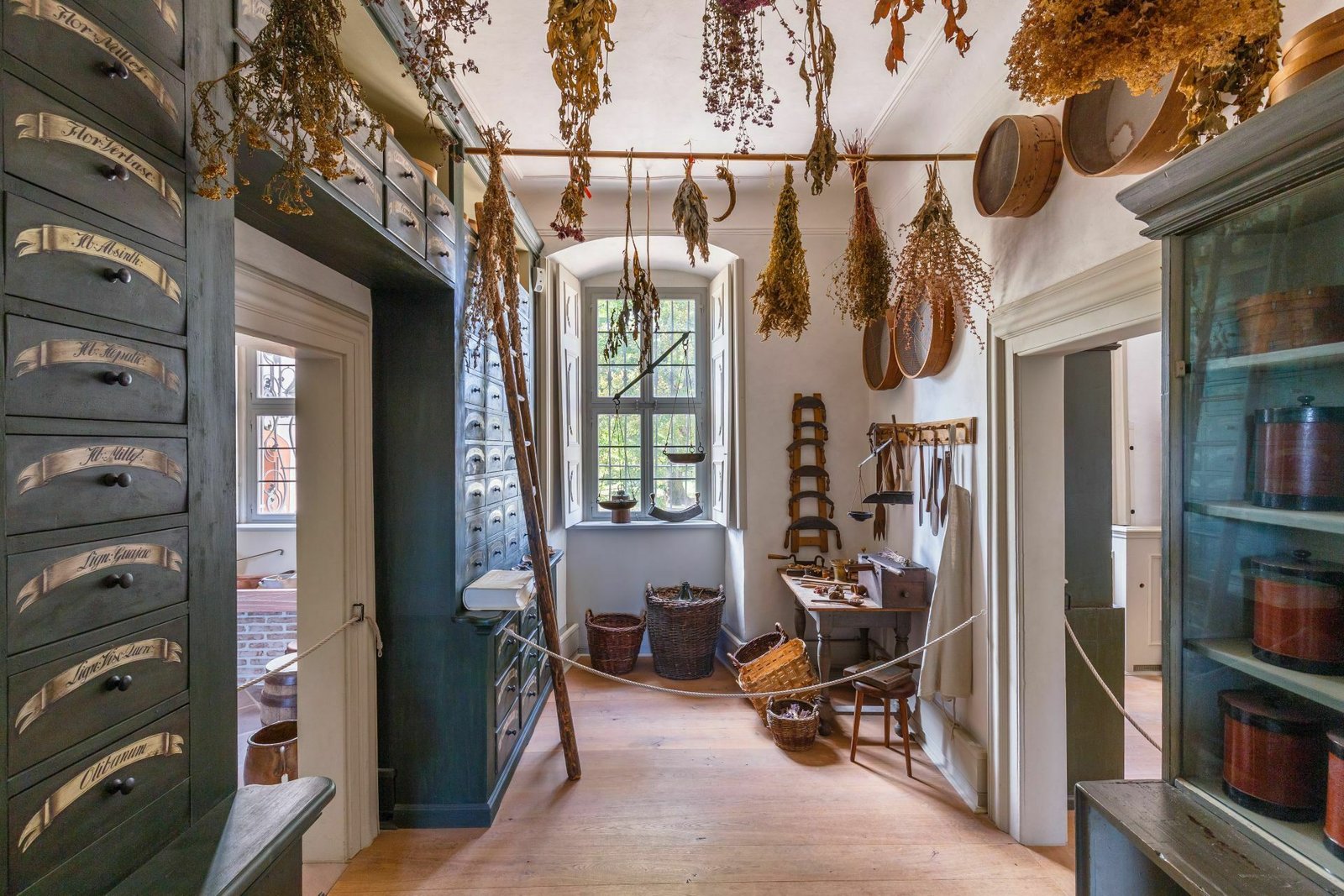Benedictine Monastery of Seligenstadt
per person
The monastery, founded in 828, is surrounded by a huge garden, which has been originally designed by the founder himself. In the middle ages this garden was used to produce plants for the population arround the monastery. The monastery consists of a main buildiung, which is divided into two parallel sections surrounding an inner court. In the main building you can find a library, a kitchen-floor and furthermore old guestrooms and the livingroom of the abbot. The building includes also a medical station and has a huge cellar below, which was originally a storage for wine.
The founder of the monastery intended to create a self-sufficient institution, within a well and a mill. Due to the fact that the monastery is located near the river Main it was easily accessible for visitors and travellers.
In the Thirty Years’ War parts of the building had been destroyed and were rebuilt in a baroque architecture. The monastery had its best time through the 11th century, when important characters from this time meet at the monastery in Seligenstadt and in the 17th century, when the building had been rebuilt. The monastery is not inhabited by monks since 1803. Today the location functions for different occasions for example weddings or conferences.
FORMAL ANALYSIS
The monastery Seligenstadt in the state of Hesse was founded by Einhard, one of the consultors of Carolus Magnus/ Charles the great, in 828. Einhard managed to organize important relics from Marcellinus and Petrus, which were an important reason for the success of the institution.
As already mentioned the monestrary has been partly destroyed during the Thirty Years’ War, but most of the building from the 11th century is perserved and just converted into a baroque architecture during the 17th century. In addition to the garden, parts of the church and the cloister are perserved. The construction of the monastery of Seligenstadt is similiar to the construction of St. Gallen.
Henry II. handed the monastery to Bishop Henry I. as a fief. Later on the monastery was controlled by the archbishop of Mainz. Due to the fact that the monastery got several donations and it had a flourishing production it achieved high economical success. In 1802 the monastery was dissolved by Ludwig X. and the rooms of the monastery were prospectivly used differently.
FLORIAN HARTMANN
- BENEDICTINE MONASTERY OF SELIGENSTADT© FOT. https://www.kultur-in-hessen.de/en/orte/kloster-seligenstadt
- PLAN OF THE CHURCH© https://www.einhard-gesellschaft-seligenstadt.de/einhards-basiliken/
- SAINTS MARCELLINUS AND PETER’S BASILICA © FOT. CC-BY-SA 4.0 1971 Markus, https://structurae.net/en/structures/ saints-marcellinus-and-peter-s-basilica
- CHURCH INTERIOR, EINHARD-BASILIKA © FOT. https://www.pinterest.com.mx/pin/my-beautiful-hometown- 33073378491642251/
- THE OLD MONASTERY KITCHEN© FOT. MICHAEL LEUKEL, 2017, https://www.schloesser-hessen.de/de/kloster-seligenstadt/praelatur
- DINING ROOM OF THE MONKS FOR THE SUMMER SEASON© FOT. MICHAEL LEUKEL, 2017, https://www.kultur-in-hessen.de/en/orte/kloster-seligenstadt
- BENEDICTINE MONASTERY CLOISTER © FOT. https://www.flickr.com/photos/hen-magonza/30364320250
- GUESTROOM© FOT. MICHAEL LEUKEL, 2017 https://www.schloesser-hessen.de/de/kloster-seligenstadt/praelatur
- FAMOUS PHARMACY© FOT. https://www.schloesser-hessen.de/de/kloster-seligenstadt/buchbare-angebote
Tour Location
Benedictine Monastery of Seligenstadt
| Other monuments and places to visit | The Old Town of Seligenstadt |
| Natural Heritage | |
| Historical Recreations | |
| Festivals of Tourist Interest | Christmas Market |
| Fairs | |
| Tourist Office | No |
| Specialized Guides | Yes |
| Guided visits | Yes |
| Accommodations | In Seligenstadt you can find several opportunities to spend the night |
| Restaurants | There are different kinds of restaurants in the surrounding area |
| Craft | |
| Bibliography | |
| Videos | |
| Website | seligenstadt.de |
| Monument or place to visit | Monastery of Seligenstadt |
| Style | Baroque |
| Type | Baroque architecture |
| Epoch | 9th / 17th centuries |
| State of conservation | Good condition |
| Mailing address | Ehemalige Benediktinerabtei, 63500 Seligenstadt |
| Coordinates GPS | Längengrad: 8°58′26″ Breitengrad: 50°02′36″ |
| Property, dependency | State of Hesse |
| Possibility of visits by the general public or only specialists | General public visits |
| Conservation needs | |
| Visiting hours and conditions | February and November to the middle of December: Tuesday to Sunday 10 am to 4 pm; March to October: Tuesday to Sunday 10 am to 5 pm; Closed from 22nd December to 31st January. The garden can be visited everytime until the sun goes down. |
| Ticket amount | 4 euros |
| Research work in progress | |
| Accessibility | Good |
| Signaling if it is registered on the route | |
| Bibliography | Becker, Hortst, Zur geschichte der Säkularisation der Abtei Seligenstadt, in: Archiv für hessische Geschichte und Altertumskund NF 49 (19919), S. 147-182. Dehio, Georg, Handbuch der deutschen Kunstdenkmäler – Hessen II. Regierungsbezirk Darmstad, (bearb. V. Folkhard Cremer u. A.), 3. Auflage, München 2008. Endemann, Traute, Die Säkulatisation Hessen-Darmstadt am Beispiel der Abtei Seligenstadt, in: Archiv für hessische Geschichte und Altertumskunde NF 62 (2004), S. 95-126. Kalinowski, Anja: Die ehemalige Benediktinerabtei Seligenstadt. Führer durch die Klosteranlage und Schauräume = Edition der Verwaltung der Staatlichen Schlösser und Gärten Hessen. Broschüre 30. Schnell + Steiner, 2. Auflage, Regensburg 2008. Mayer, Johannes Gottfried, Klostermedizin. Die Kräutergärten in den ehmaligen Klosteranlagen von Lorsch und Seligenstadt, Regensburg 2002. Post, Hubert: Die Geschichte der Benediktiner-Abtei Seligenstadt. Die Äbte des Klosters Seligenstadt. Münsterschwarzach o. J. [2002]. Schopp, Manfred, Die weltliche Herrschaft der Abtei Seligenstadt 1478-1803, in: Archiv für hessische Geschichte und Altertumskunde N. F. 29 (1965/66), S. 187-401. |
| Videos | |
| Information websites | schloesser-hessen.de wikipedia.org kultur-in-hessen.de kultur-in-hessen.de |
| Location | Seligenstadt in the state of Hesse, Germany |


